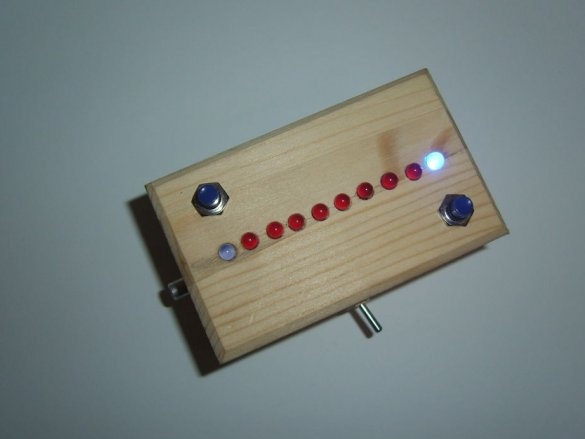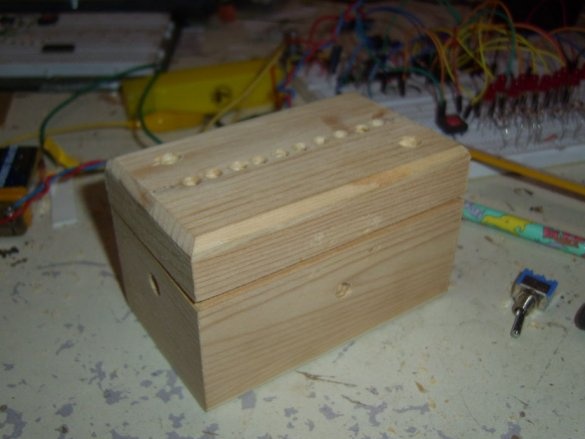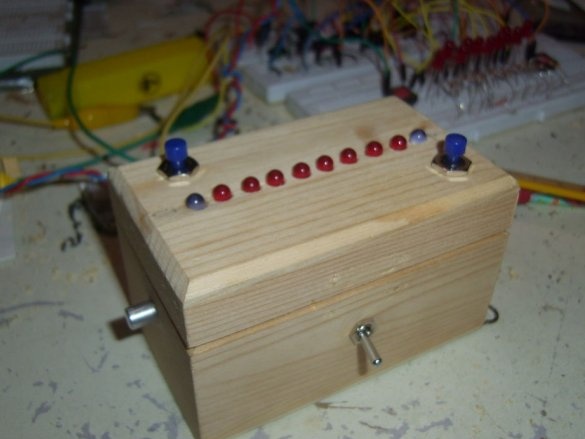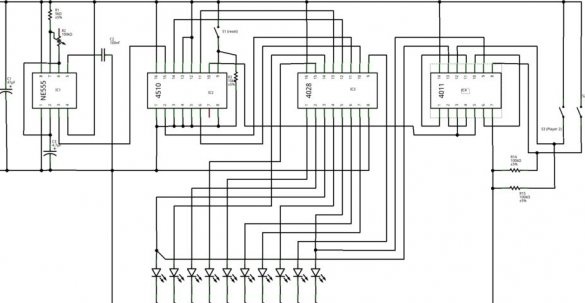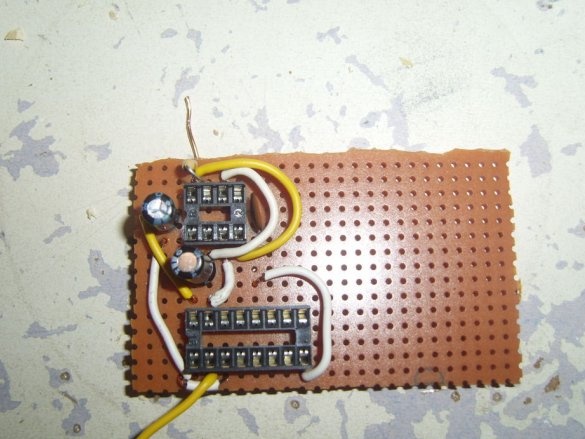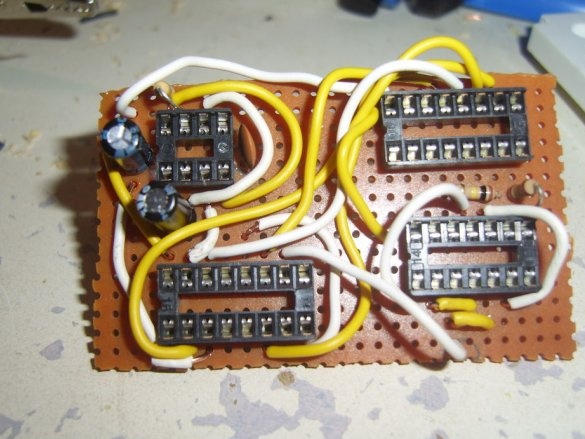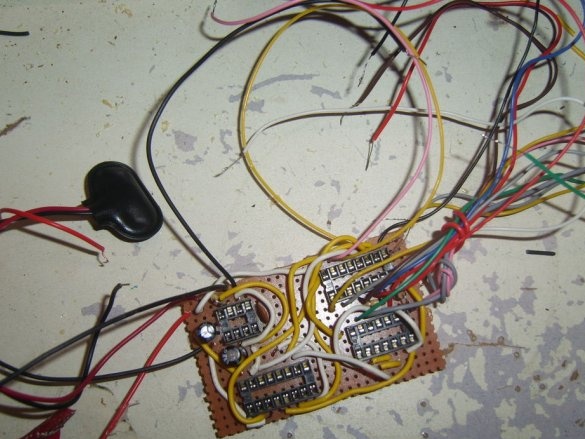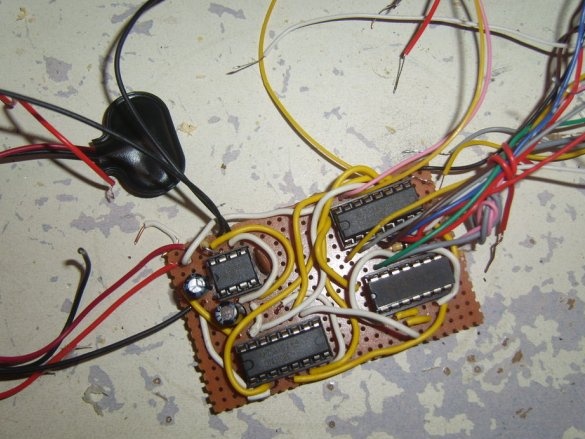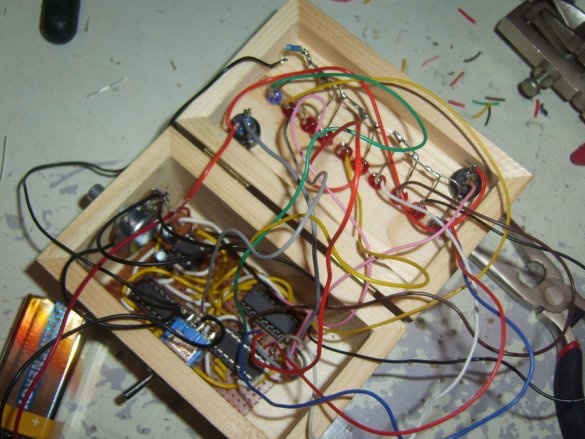What happens if you take some classic game (in this case, Pong) and transfer it from two dimensions to? This is the author of Instructables under the nickname mischka. The idea itself is not his, but borrowed from Hackaday, but the implementation is completely different.
The game algorithm is implemented on chips of types 4011 (K561LA7) - four NAND elements, 4510 (there is no direct analog, you can try to remake the circuit on K561IE14) - a counter, 4028 (K561ID1) - a binary decimal decoder, 555 (KR1006VI1) - a timer .
Apple had one-button mice, and here were one-button joysticks, if you can call them that. Press the button exactly when the ball flew to you. Pressed sooner or later - the ball is not beaten off. You can even play immediately for two, and then check whether the speed is well regulated:
Before drawing up the concept, the master estimates the structural:
Pulses, the frequency of which is controlled by a variable resistor, from the output of the clock generator on the timer are fed to the input of the counter. Although it is binary, the conversion factor is set in it so that it counts only from 0 to 9. Since the counter is reversible, the direction of the count can be set by changing the level at pin 10. The binary code from the counter goes to a decoder that controls the LED line.
Of the four elements AND NOT, two are used in the RS-trigger. The other two compare the state of the buttons with the state of the first and last LEDs. Moreover, the buttons are connected so that the signal from them passes only when the corresponding LED is on. When the button is released, the input of the element is pulled down by the resistor to improve noise immunity. The outputs of these elements are connected to the inputs of the trigger that controls the direction of the account through the already mentioned output 10. Change of direction occurs only if the ball is beaten off.
You can try to modify the game by making the sound of varying frequency be heard when the ball is moved, and a noise generator is turned on in the first and last positions. This allowed you to play by ear without looking at the LEDs and without even installing them. The story of a boy is known, whose parents in the nineties, leaving for work, hid the cord from the monitor. He turned on the computer, launched the racing game with the arrow keys, and played very well by ear. Well, today there are many specialized audio games.
Having decided on the algorithm, mischka experiments immediately on two breadboard type breadboard boards, fitting an electric circuit under it:
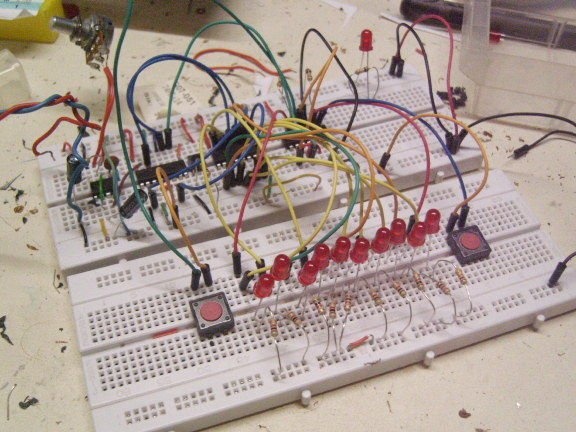
When everything starts to work correctly, he puts off for a while electronics and is taken for the body.Remember how B.S. Ivanov in his books of the corps homemade called caskets? And here is the real box:
The master drills holes for LEDs, buttons, a variable resistor and a switch in it, and also removes the lock, which he believes does not look:
And all this sets:
He returns to the breadboard and, based on what he did, compiles a circuit diagram:
From two boards of the breadboard type, it transfers the entire circuit exactly to one perfboard board - also a breadboard, but more compact and vibration-proof:
Thinking, he simplifies the circuit: removes the reset button and its pull-up resistor, pin 9 of the counter connects directly to the common wire. Instead of ten current-limiting resistors, it puts one common one, since at one time moment only one LED is on. It places the board in the case and connects to everything that is installed there:
Closes the box, and you can check whether the circuit is correctly transferred:
The developer proposed two improvements to the game. A switch parallel to the button of the second player will allow you to play alone with a machine that never misses. And the one-shots after the buttons will exclude cheating with long or constant retention. I’ll add on my own that the clock can also be assembled on the K561LA7, but then the frequency will depend on the supply voltage.

